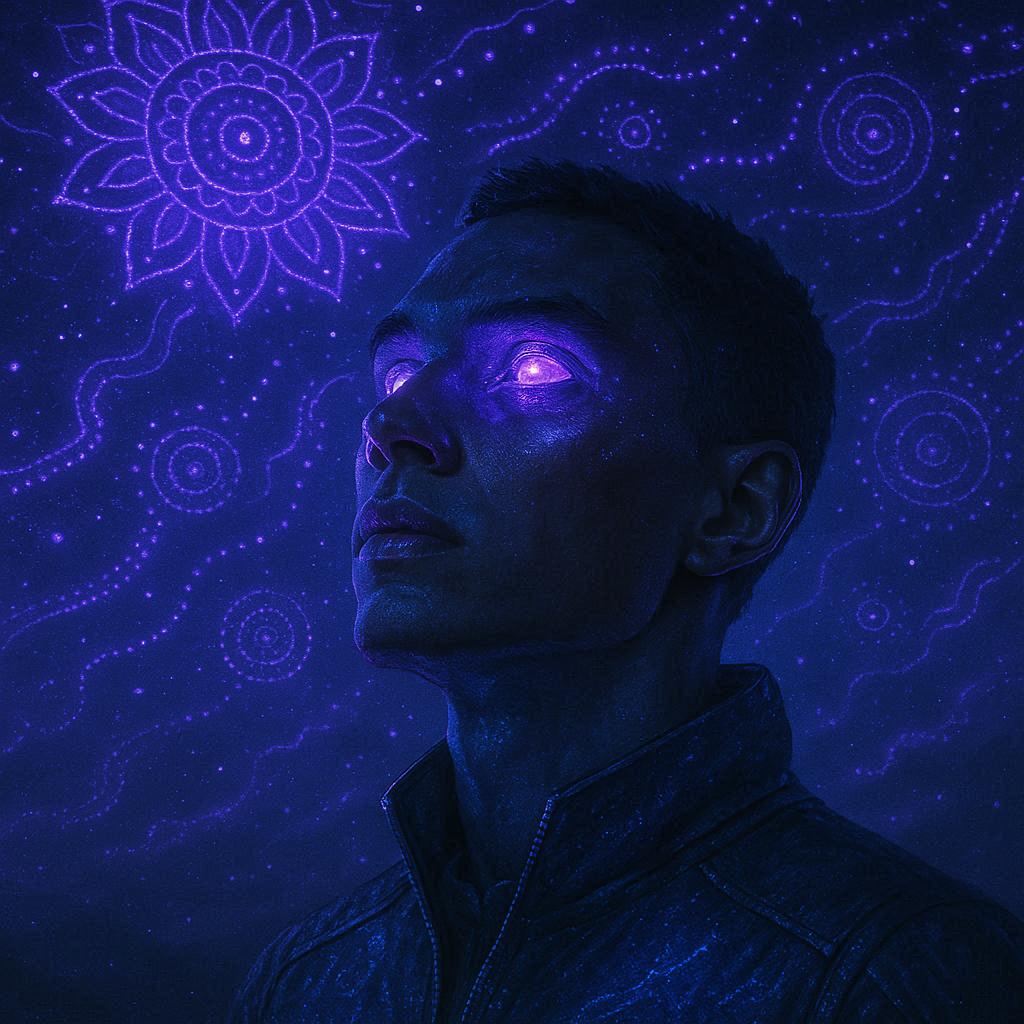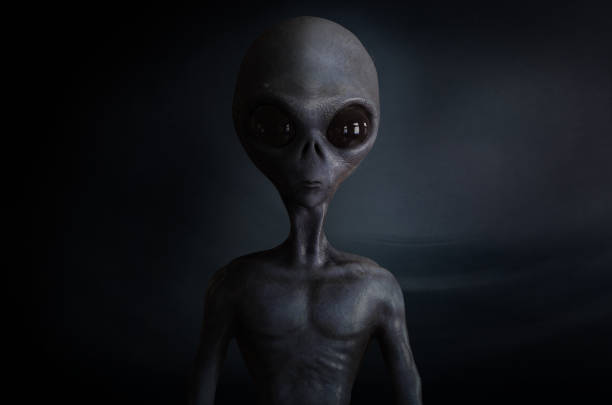For all the wonders of the human brain, our experience of reality is deeply limited. Every moment, the world around us is bursting with waves of light, streams of sound, magnetic fields, chemical signals, and vibrations across the spectrum of energy. Yet we only perceive a tiny fraction of it. We see a sliver of the electromagnetic spectrum called visible light. We hear sound in a narrow frequency band, from about 20 hertz to 20,000 hertz. We smell and taste a selection of chemical compounds but are blind to countless others. Even our touch is just one way of interpreting the constant forces acting on our skin.
When we consider that other animals live within different sensory worlds, the smallness of our perception becomes even clearer. Dogs detect scents millions of times better than we do. Bats and dolphins map the world through echolocation. Birds navigate across continents by sensing Earth’s magnetic field. Sharks detect the faint electrical signals from the beating heart of their prey. Compared to this, humans are sensory minimalists—brilliant thinkers perhaps, but poor perceivers.
And yet, evolution does not stop here. Nor does technology. The question is inevitable: will future humans remain confined to this narrow window of sensation, or will we one day experience the world with superhuman senses? To answer this, we must travel across biology, neuroscience, and futuristic technology, exploring what it might mean to expand perception beyond its current limits.
The Hidden World Beyond Our Reach
Right now, we live surrounded by invisible dimensions of reality. Standing outside on a sunny day, your eyes detect only a thin band of electromagnetic energy, from red to violet. But beyond violet lies ultraviolet light, seen by bees and butterflies. Beyond red lies infrared, detected by snakes to sense the body heat of prey. We are bathed in radio waves that carry music, Wi-Fi signals, and conversations across the air, but our naked senses remain oblivious.
The same blindness applies to sound. Our voices and ears are tuned for survival and communication, not for the full symphony of vibration. Elephants rumble in infrasound too low for us to hear, communicating across miles. Bats and whales use ultrasound at frequencies far beyond human detection. Our noses, though sophisticated, pale in comparison to the olfactory landscapes of dogs or rodents. Even our sense of time is limited—we process moments in short intervals, while certain insects perceive motion so quickly that our slow movements look like slow-motion films to them.
We live inside a sensory bubble, perceiving only a slice of the truth. And yet, with science and imagination, the bubble can be stretched. Perhaps even shattered.
Evolution’s Next Move
One path toward superhuman senses lies in biology itself. Humans, like all species, are products of evolution. Our sensory limits are not fixed laws of physics but outcomes of natural selection. In the past, there was no survival advantage in seeing ultraviolet or hearing infrasound. But the future may be different. As environments change—whether due to climate shifts, urbanization, or artificial habitats—new sensory abilities may emerge.
Genetic engineering offers a way to accelerate what nature accomplishes slowly. Already, scientists are exploring the genetic basis of sensory systems. Researchers have identified the genes that allow birds to perceive magnetic fields, or mantis shrimp to see a rainbow of colors invisible to us. By editing genes, it is theoretically possible to introduce new receptor proteins into human eyes, ears, or noses, granting perception beyond our current boundaries.
Imagine children born with the ability to perceive ultraviolet patterns on flowers, or with hearing that spans into ultrasonic ranges. Their world would not only be richer but fundamentally different from ours. Evolution could provide the framework, but human hands might become the sculptors. The line between natural adaptation and deliberate design may blur, giving rise to future generations whose senses feel superhuman by today’s standards.
Technology as the New Organ
If evolution is slow, technology is fast. In fact, humans have already extended their senses beyond biology. Telescopes let us see galaxies billions of light-years away. Microscopes reveal worlds smaller than cells. Radio antennas detect signals across the universe. We cannot sense these phenomena directly, but through instruments we extend perception far beyond flesh.
The next frontier is not merely building external tools but merging them with our bodies. Scientists are already developing prosthetic devices that feed information directly into the brain. Cochlear implants allow the deaf to hear. Retinal implants bring vision to the blind. Neural interfaces are beginning to decode brain signals and transmit new kinds of information.
What if, instead of restoring lost senses, these devices introduced entirely new ones? A wearable implant could translate radio waves into electrical impulses in the brain, allowing you to “hear” Wi-Fi signals or “see” invisible transmissions. A neural interface might convert infrared radiation into a visual overlay, letting you navigate in total darkness. A chip could turn seismic vibrations into sensations on your skin, making you aware of earthquakes before they strike.
In this sense, technology becomes a new organ—an extension of biology that expands the boundaries of human experience.
Seeing Beyond Sight
Of all our senses, vision dominates. Nearly half of the brain is involved in processing visual information. Enhancing sight is therefore one of the most compelling routes to superhuman perception.
Scientists have already engineered proteins that allow mice to perceive infrared light. With genetic modification, similar enhancements might one day give humans the ability to see thermal radiation directly. Instead of using night-vision goggles, your eyes themselves would glow with perception of warmth and cold.
Other possibilities lie in ultraviolet perception. Birds, bees, and insects see ultraviolet patterns on flowers and feathers invisible to us. If humans could see these wavelengths, the world would bloom with hidden textures, markings, and guides. Art would look different, faces might reveal new shades of health or emotion, and the natural world would seem enchanted with secret codes.
But vision could also extend into realms entirely unfamiliar. Imagine perceiving gravitational waves as ripples of light across the sky. Or sensing quantum entanglement through subtle glows of energy. While these are speculative, the principle is simple: once data can be captured, it can be translated into forms the brain can perceive. Whether by biology or technology, the doors of sight may open onto landscapes no human has ever seen.
Hearing the Unheard
Our ears are tuned for survival in the human world, but they filter out vast sonic realms. To imagine superhuman hearing, consider two directions: the very low and the very high.
Infrasound, frequencies below human hearing, travels long distances and penetrates obstacles. Elephants and whales use it to communicate across miles. If humans could hear infrasound, cities would resonate with deep vibrations, storms would sing warnings before they arrived, and the Earth itself might hum with tectonic tension.
On the other end lies ultrasound, the high-frequency range used by bats, dolphins, and some rodents. With ultrasonic hearing, humans could detect the minute squeaks of insects, hear electronic devices buzzing, or navigate by echolocation in total darkness. Blind individuals with enhanced ultrasonic perception might move as fluidly as dolphins in a murky ocean.
Superhuman hearing might also involve new translations of sound. Brain-computer interfaces could allow us to “hear” data streams, transforming raw information into tones and rhythms. A stock market fluctuation might sound like a rising symphony, or a change in brain waves could whisper as subtle music. Hearing might evolve from a passive sense into an active decoding of reality.
Touching the Invisible
Touch is often underestimated, yet it is our most ancient and reliable sense. It tells us where we end and the world begins. Enhancing touch could bring astonishing new dimensions of awareness.
Engineers have already developed haptic suits that simulate physical sensations in virtual reality. Extend this further, and future humans might feel not only surfaces but also invisible forces. Magnetic fields could register as tingling along the skin. Air pressure shifts before a storm could press against our fingertips. Electric fields, normally imperceptible, could be felt as gentle flows of texture across the body.
Such tactile superpowers could also connect us more intimately with others. Imagine shaking hands and feeling not only warmth but the heartbeat and stress level of the other person. Imagine touching a wall and sensing the vibrations of water pipes within. Touch could expand from a local, surface-bound sense into a portal of hidden truths.
Smelling and Tasting the Unseen
While sight and hearing dominate human attention, smell and taste anchor us to primal experiences. Yet even here, expansion is possible.
Dogs navigate the world through a universe of scents. They smell fear, disease, and even the passage of time. By engineering human olfactory receptors or creating neural implants, we might one day smell a person’s emotional state, detect chemical toxins in the air instantly, or identify illnesses long before symptoms appear.
Taste, too, could be reimagined. Currently, humans perceive five primary tastes: sweet, salty, sour, bitter, and umami. But what if we could taste a wider spectrum of chemicals? Water molecules might carry subtle flavors depending on their mineral composition. Energy-rich compounds could tingle on the tongue. Nutritional needs might guide taste itself—when deficient in iron, a person might literally taste the craving for iron-rich foods.
Superhuman smell and taste could turn eating into a form of hyper-awareness, where every meal is a map of chemistry, and every breath is a story of the world’s invisible flows.
The Sixth Sense and Beyond
Beyond the five traditional senses lies the mysterious realm of additional perception. Even today, humans possess more than five senses: balance, temperature, pain, proprioception (the sense of body position), and internal signals like hunger or thirst. Enhancing these could create profound new ways of being.
Consider magnetoreception—the ability to sense Earth’s magnetic field. Birds use it to migrate across oceans. Humans, with the right proteins or implants, could navigate intuitively without maps or compasses, feeling the planet’s orientation in their bones.
Or consider chronoperception, the sense of time. Currently, we experience time as a linear flow. But with enhanced perception, humans might feel time more flexibly, noticing microseconds or perceiving long durations as distinct textures. The subjective experience of time could become a manipulable sense, transforming how we live and remember.
Entirely new senses might also emerge from technology. Data streams could be fed directly into the brain as a new kind of awareness. A person might “feel” internet traffic as waves of pressure, or “sense” global weather patterns as a kind of background hum. Consciousness itself could be extended into dimensions no one has yet imagined.
The Ethical Frontier
Yet with great power comes great responsibility. The idea of superhuman senses is exhilarating, but it also carries profound ethical challenges. If some people could see ultraviolet while others could not, would it create a new form of inequality? If enhanced smell could detect disease, how would privacy be protected?
Moreover, what would it mean to live in a world where reality is experienced differently by different groups of people? Shared reality is the glue of society, but sensory divergence might fracture it. For example, an enhanced human might see ultraviolet patterns that others cannot, or hear ultrasonic warnings that go unnoticed. Would this create division, or could it enrich collective experience?
There is also the danger of overload. The brain evolved to filter information for survival. Expanding senses may bring beauty, but also noise. The challenge will be not only to enhance perception but also to integrate it gracefully, avoiding confusion or sensory fatigue.
Toward a Superhuman Future
Despite these challenges, the trajectory seems clear: the future of humanity is one of expanded perception. Whether through genetic engineering, cybernetic implants, or wearable technologies, the boundaries of our sensory world will stretch. What today seems impossible may tomorrow be routine.
The shift will not be merely functional but philosophical. To gain superhuman senses is not only to perceive more but to redefine what it means to be human. Our art, music, relationships, and spirituality will all be transformed by new ways of knowing reality. The colors of the world will multiply, the songs of the universe will grow richer, and the texture of existence will deepen.
Perhaps, in the end, this is humanity’s destiny—not to remain confined to a narrow window of perception, but to open the doors of reality wide. To live as explorers of sensation, discovering new worlds not across the stars but within the very fabric of our own bodies.
Conclusion: The Future Within Us
The question of whether humans will develop superhuman senses is no longer science fiction. It is a real possibility, supported by advances in genetics, neuroscience, and technology. Already, the blind can see with artificial eyes, the deaf can hear with cochlear implants, and prosthetics can return touch to the fingertips of amputees. These are not just repairs; they are the first steps toward expansion.
What lies ahead is a future where human experience itself becomes malleable. A future where perception is not fixed by biology but chosen, designed, and reinvented. Will we see ultraviolet skies? Will we hear the whispers of atoms? Will we taste the energy of the stars? The answers lie in the centuries to come, but one truth is certain: the human story is not finished.
The next chapter may not be about conquering planets or building machines, but about awakening senses we never knew we had. In that awakening, the universe itself may reveal layers of beauty, complexity, and wonder beyond imagination. The superhuman future may already be within us, waiting only to be unlocked.






